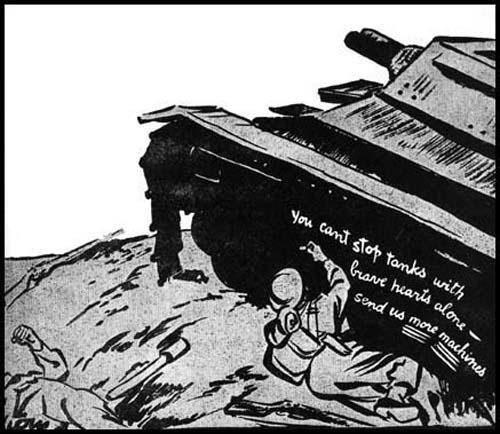On this day on 26th May
On this day in 1675, the Quakers publishes a document concerning the role of women in the movement. At a meeting leaders in London, including William Penn, Thomas Salthouse. Alexander Parker and George Whitehead stated that all marriages be cleared twice by women's and men's meetings, to make sure that "all foolishand unbridled affections" be speedily brought under God's judgment. It also reminded Quakers that women's meetings, just like men's meetings, had been set up with God's counsel and sharply admonished those who sneered at them as "synods" and "Popish impositions". Violators of these instructions - "disorderly walkers" - should have their names recorded.
It has been claimed by one Quaker historian "Separate men's and women's Business Meetings were recommended at all levels of the structure, each with their own areas of responsibility. Fox argued this was necessary for women to have their own voice, although their areas of influence were highly gendered and limited to pastoral duties such as marriage arrangements and poor relief. It seems that whilst the ideal of spiritual equality persisted, political equality did not."
One of the main opponents of women's meetings was Anne Docwra. She argued that St Paul had debarred women from having authority over men; women, however, could prophesy and guide men Friends in the administration of charity funds. (149) In April 1683, Docwra visited Fox in London to discuss these matters. She had heard from a relative that he was as "big as two or three, and spent his time dozing, in a near stupor from liquor and brandies". Instead she found "a big man, true, taller than average, big boned, his face rounded, a bit on the fat side, but not incapacitated." Anne added "he moved stiffly, and his hands and fingers were so puffy he could not write". However, she left impressed with the way he supported women's meetings.
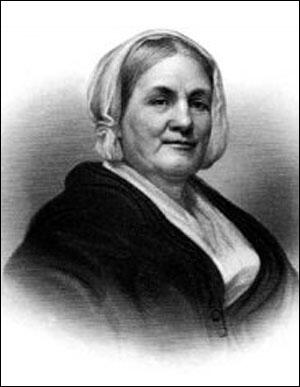
On this day in 1832 Eliza Marshall was interviewed by Michael Sadler and his House of Commons Committee:
Question: What was your hours of work?
Answer: When I first went to the mill we worked for six in the morning till seven in the evening. After a time we began at five in the morning, and worked till ten at night.
Question: Were you very much fatigued by that length of labour?
Answer: Yes.
Question: Did they beat you?
Answer: When I was younger they used to do it often.
Question: Did the labour affect your limbs?
Answer: Yes, when we worked over-hours I was worse by a great deal; I had stuff to rub my knees; and I used to rub my joints a quarter of an hour, and sometimes an hour or two.
Question: Were you straight before that?
Answer: Yes, I was; my master knows that well enough; and when I have asked for my wages, he said that I could not run about as I had been used to do.
Question: Are you crooked now?
Answer: Yes, I have an iron on my leg; my knee is contracted.
Question: Have the surgeons in the Infirmary told you by what your deformity was occasioned?
Answer: Yes, one of them said it was by standing; the marrow is dried out of the bone, so that there is no natural strength in it.
Question: You were quite straight till you had to labour so long in those mills?
Answer: Yes, I was as straight as any one.
On this day in 1832 Thomas Creevey criticises Duke of Wellington on 1832 Reform Act. "One more day will finish the concern in the Lords, and that this should have been accomplished as it has against a great majority of peers, and without making a single new one, must always remain one of the greatest miracles in English history. He (the Duke of Wellington) has destroyed himself and his Tory high-flying association for ever. This (the Reform Act) has saved the country from confusion, and perhaps the monarch and monarchy from destruction."
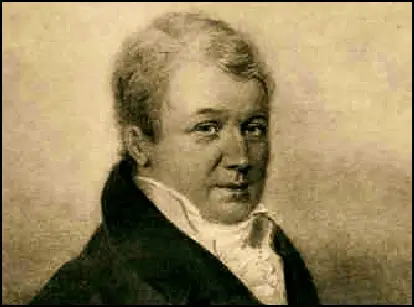
On this day in 1838 the first edition of the Northern Star is published. Feargus O'Connor, the Leeds representative of the London Working Mens' Association, decided to establish a weekly radical newspaper in Yorkshire. After a series of meetings in Leeds, Bradford, Halifax, Huddersfield and Hull, O'Connor had raised £690 for his venture. Although the paper paid the 4d. stamp duty O'Connor denounced it as a tax on free speech.
The Northern Star contained reports on Chartist meets all over Britain and its letter's page enabled supporters to join the debate on parliamentary reform. O'Connor's newspaper also spearheaded the campaign in support of those skilled workers such as handloom weavers who had suffered the consequences of new technology. Within four months of starting publication, the Northern Star was selling 10,000 copies a week. By the summer of 1839 circulation of the Northern Star reached over 50,000 a week and by the end of the year O'Connor had personally made a profit of £13,000 on the venture.
Feargus O'Connor used the newspaper to question the Moral Force arguments of William Lovett and Henry Hetherington and to raise the possibility of using violence to win the vote. In March 1840 O'Connor was tried at York for publishing seditious libels in the Northern Star. He was found guilty and sentenced to eighteen months imprisonment. Even with O'Connor in prison the Northern Star continued to sell in large numbers. Whereas William Lovett's The Charter could only achieve a circulation of 6,000 the Northern Star was now selling over 48,000 copies a week
In 1845 Feargus O'Connor and the Northern Star launched his Chartist Land Plan. His objective was to raise money so that he could buy a large estate that would be then divided into plots of three and four acres. Subscribers would then have the opportunity to draw lots and the winners would obtain a cottage and some land. O'Connor promised that his Land Scheme would "change the whole face of society in twelve months" and would "make a paradise of England in less than five years".
Heavily involved in his Land Scheme, O'Connor appointed George Julian Harney as editor of the newspaper. Harney became interested in the international struggle for universal suffrage and helped establish the Fraternal Democrats in September 1845. It was through this organisation that Harney met Karl Marx and Friedrich Engels. Harney persuaded both men to write articles for the Northern Star.
Harney was now a socialist and he used the Northern Star to promote this philosophy. Feargus O'Connor disagreed with this approach and called Harney and his supporters: "Socialists first and Chartists second". O'Connor eventually pressurized Harney into resigning as editor of the paper.
The fortunes of the Northern Star declined with those of the Chartist movement. By the end of 1851 sales of the newspaper had fallen to 1,200 a week. Feargus O'Connor had started to lose interest in the struggle for universal suffrage and in April 1852 sold the Northern Star to its former editor, George Julian Harney. Harney merged it with the Friend of the People and called his new paper, the Star of Freedom. However, this newspaper only survived a few months and in December, 1852 closed it so that he concentrate on his new journal, The Vanguard.
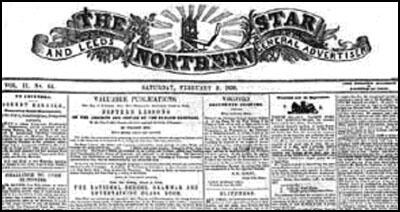
On this day in 1849 artist Hubert von Herkomer was born in Germany. Hubert's family to England and in 1857 settled in Southampton. Herkomer studied at Southampton School of Art, the Munich Academy and the South Kensington Art School, where like his fellow student Luke Fildes, he was influenced by the work of Frederick Walker.
Herkomer left Kensington Art School and 1867 and started a career as a book and magazine illustrator. Herkomer found most of the work fairly boring but as a young man with radical political opinions he was excited by the news that the social reformer, William Luson Thomas, planned to publish an illustrated weekly magazine called the Graphic magazine.
Hubert von Herkomer sent Thomas a drawing of a group of gypsies. Thomas accepted the picture and the following week it appeared in the Graphic. Herkomer was paid £8 for the picture and Thomas urged him to send more. Herkomer later recalled: "It is not too much to say that there was a visible change in the selection of subjects by painters in England after the advent of The Graphic. Mr. Thomas opened its pages to every phase of the story of our life; he led the rising artist into drawing subjects that might never have otherwise arrested his attention; he only asked that they should be subjects of universal interest and of artistic value."
Over the next few years Herkomer had a large number of his drawings published in the Graphic. However, unlike his two friends, Luke Fildes and Frank Holl, Herkomer was not offered a full-time post on the magazine. Where as staff members were commissioned, free-lance artists such as Herkomer had to find his own subject matter. Although Herkomer was angry when William Luson Thomas told him he was unwilling to employ him as a staff member of the Graphic, he later admitted: "In my heart I bitterly resented these words, but they were the words I needed: they were the making of me as an artist."
Several of Herkomer's engravings that appeared in the Graphic were later reworked as large-scale oil paintings. This included, The Last Muster (1875) and Eventide: A Scene in the Westminster Union (1878). The Last Muster had originally been used by the Graphic to show a group of old army veterans attending a church service. As a painting it was seven feet long and was sold to a photographic firm for £1,200.
In 1880s Hubert von Herkomer concentrated on the financially lucrative area of portraiture. He visited the USA and during a period of ten weeks received £6,600 for thirteen portraits. Herkomer's income was now higher than many of the rich people he painted and was now able to live a life of luxury. Although he received large sums of money for his portraits, Herkomer continued to produce social realist paintings. This included the Pressing to the West (1884), Hard Times (1885) and On Strike (1891).
Herkomer opened his own art school and during the period 1883 and 1904, trained over 500 students. Herkomer also served as Slade Professor of Art between 1885 and 1895.
Hubert von Herkomer, who was knighted in 1907, died ion 31st March 1914.
On this day in 1860 Fredrikke Palmer was born in Norway. She studied art in Oslo and Berlin before moving to the United States. A supporter of women's suffrage, and an opponent of child labour, Fredrikke's work appeared in several journals and eventually became art editor of the Woman's Journal. Fredrikke married A. H. Palmer, a professor at Yale University. After the death of her husband she left New Haven to live in Honolulu
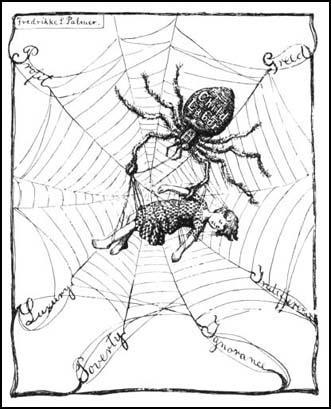
On this day in 1868 the Impeachment of Andrew Johnson ends with his acquittal by one vote. Radical Republicans were growing increasing angry with Johnson over his attempts to veto the extension of the Freeman's Bureau, the Civil Rights Bill and the Reconstruction Acts. This became worse when Johnson dismissed Edwin M. Stanton, his Secretary of War, and the only radical in his Cabinet and replaced him with Ulysses S. Grant. Stanton refused to go and was supported by the Senate. Grant now stood down and was replaced by Lorenzo Thomas.This was a violation of the Tenure of Office Act and some members of the Republican Party began talking about impeaching Johnson.
At the beginning of the 40th Congress Benjamin Wade became the new presiding officer of the Senate. As Johnson did not have a vice-president this meant that Wade was now the legal successor to the president. This was highly significant as attempts to impeach the president had already began.
Johnson continued to undermine the Reconstruction Acts. This included the removal of two of the most radical military governors. Daniel Sickles (the Carolinas) and Philip Sheridan (Louisiana and Texas) were replaced them with Edward Canby and Winfield Hancock.
In November, 1867, the Judiciary Committee voted 5-4 that Johnson be impeached for high crimes and misdemeanors. The majority report written by George H. Williams contained a series of charges including pardoning traitors, profiting from the illegal disposal of railroads in Tennessee, defying Congress, denying the right to reconstruct the South and attempts to prevent the ratification of the Fourteenth Amendment.
On 30th March, 1868, Johnson's impeachment trial began. Johnson was the first president of the United States to be impeached. The trial, held in the Senate in March, was presided over by Chief Justice Salmon Chase. Johnson was defended by his former Attotney General, Henry Stanbury, and William M. Evarts. One of Johnson's fiercest critics, Thaddeus Stevens was mortally ill, but he was determined to take part in the proceedings and was carried to the Senate in a chair.
Charles Sumner, another long-time opponent of Johnson led the attack. He argued that: "This is one of the last great battles with slavery. Driven from the legislative chambers, driven from the field of war, this monstrous power has found a refuge in the executive mansion, where, in utter disregard of the Constitution and laws, it seeks to exercise its ancient, far-reaching sway. All this is very plain. Nobody can question it. Andrew Johnson is the impersonation of the tyrannical slave power. In him it lives again. He is the lineal successor of John C. Calhoun and Jefferson Davis; and he gathers about him the same supporters."
Although a large number of senators believed that Johnson was guilty of the charges, they disliked the idea of Benjamin Wade becoming the next president. Wade, who believed in women's suffrage and trade union rights, was considered by many members of the Republican Party as being an extreme radical. James Garfield warned that Wade was "a man of violent passions, extreme opinions and narrow views who was surrounded by the worst and most violent elements in the Republican Party."
Others Republicans such as James Grimes argued that Johnson had less than a year left in office and that they were willing to vote against impeachment if Johnson was willing to provide some guarantees that he would not continue to interfere with Reconstruction.
When the vote was taken all members of the Democratic Party voted against impeachment. So also did those Republicans such as Lyman Trumbull, William Fessenden and James Grimes, who disliked the idea of Benjamin Wade becoming president. The result was 35 to 19, one vote short of the required two-thirds majority for conviction. The editor of The Detroit Post wrote that "Andrew Johnson is innocent because Ben Wade is guilty of being his successor."
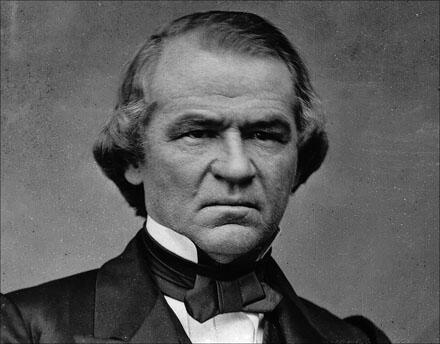
On this day in 1873 artist Olaf Gulbransson was born in Norway. After establishing himself as a leading humorous artist in his own country he was recruited in 1902 by Albert Langen, to work for his German journal, Simplicissimus.
In 1906 several staff members, including Gulbransson, Ludwig Thoma, Thomas Heine, Rudolf Wilke, and Edward Thony persuaded Albert Langen to change Simplicissimus into a joint stock company. This gave more power to the staff to control the direction of the journal.
Apart from a period (1922-27) when Gulbransson returned to Norway, he worked in Munich until Simplicissimus ceased publication in 1944.
Olaf Gulbransson died on 18th September 1958.
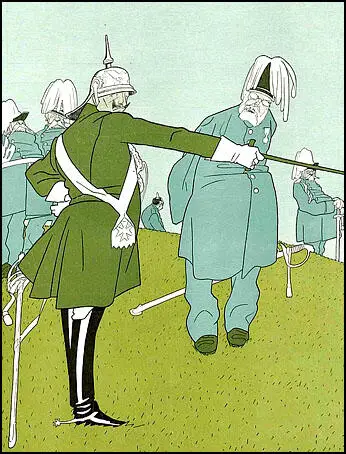
On this day in 1877 Isadora Duncan, the daughter of Joseph Charles Duncan (1819–1898) and Mary Isadora Gray (1849–1922), was born in San Francisco, California. Her father's business failed soon after her birth, and she was brought up in poverty. Isadora wrote that there was often nothing to eat in the house: "I was always the volunteer sent to the butcher, and who cleverly got the cutlets out of him without paying... I was the one sent to get credit out of the baker." Isadora's parents were divorced when she was a child.
Samuel Dickson has claimed: "Isadora was a quaint child, a strange mixture of practical common sense and worldly sophistication, and she was a dreamer like her father. The child loved poetry, beauty, and rhythm, and she hated reality. She was, in fact, a rebel. Her childhood had been an unhappy one. There was strife and divorce, with her mother's insistence that her father, Joseph, was a demon in human garb. Then there was her mother's disavowal of the religion in which she had been raised, and her espousal of the atheism of Robert Ingersoll. These were the unhealthy shapers of Isadora's childhood. Of course, when she eventually met her father, she found him a charming, lovable poet, and that heightened the confusion in her mind. Passing years tend to soften the intolerance of childhood, but Isadora Duncan never lost her contempt for the institution of marriage as she had seen it. When she was twelve years old she made a solemn vow that she would welcome love when it came, but she would never marry."
Isadora's mother moved the family to Oakland, where she established herself as a pianist and music teacher. She later described her life as being "shabby" and "thriftless". Her mother did find the money to pay for dance lessons. According to Isadora her teacher was "one of the most famous in San Francisco" but she did not like the steps he taught her "because they were ugly and against nature". She never went back and decided to teach herself to dance. After leaving school she gave dance classes to local children.
In 1895 Duncan became part of Augustin Daly's theater company in New York City. It has been pointed out by Jone Johnson Lewis: "Isadore Duncan's first public appearances in America made little impact on the public or critics, and so she left for England in 1899 with her family, including her sister, Elizabeth, her brother, Raymond, and her mother. There, she and Raymond studied Greek sculpture at the British Museum to inspire her dance style and costume - adopting the Greek tunic and dancing barefoot. She won over first private and then public audiences with her free movement and unusual costume (called "scanty," baring arms and legs). She began to dance in other European countries, becoming quite popular."
While in London she gave private performances in the homes of wealthy patrons. The money she earned from these engagements allowed her to rent a dance studio to develop her work and create larger performances for the stage. Walter Duranty, was a student when he saw her for the first time. He wrote in his autobiography, I Write As I Please (1933): "Of all the people I have known I think Isadora was the most picturesque. I saw her dance once in London while I was still in college, and ever afterwards the memory of her grace and beauty and slim, flashing limbs stayed with me as something rare and wonderful." Duranty later claimed "and ever afterwards the memory of her grace and beauty and slim, flashing limbs stayed with me as something rare and wonderful... a flame inside her whose brightness had nothing to do with her body."
In 1902 Isadora Duncan agreed to go on tour with Loie Fuller, creating new works using her innovative dance technique. In Paris her dancing was seen by the journalist, William Bolitho. He wrote in his book, Twelve Against the Gods (1929): "It is Isadora's resolute rejection of the ordinary hope and destiny of women, the legal support of a man, indeed, that spiritually entitles her life to be considered as an adventure.... To eke out her Nature, she borrowed and adopted the attitudes of Greek vases. She, the pure inspirationist, gradually constructed an intricate technique of her own." When she reached Germany she told a local impresario that she had "come to Europe to bring about a renaissance of religion by means of dancing."
Samuel Dickson has pointed out: "She danced in Paris and was cheered. she danced in Berlin, and the art-loving Germans went mad with enthusiasm. The artists and students of Munich idolized her. The story is told of the night that, unharnessing her horses, they dragged her carriage through the streets of Munich in a rain of flowers. They carried her into their cafe, lifted her onto a table, and she danced for them. Life was gorgeous. But always at the back of her persistent mind was her dream, Some day she would dance in the land of ancient culture where the Athenian maidens had made the dance a religion. Some day she would bring back the beauty of classical simplicity to the people of the nineteenth century. What if she did dance in scant veils that showed the honest beauty of her form? There could be no evil in honest beauty. Europe cheered her and virtuous old wives condemned her."
Duncan had a strong desire to pass on her philosophy of dance and in 1904 she opened a dance-school in Grünewald. Later, Duncan established schools in Paris and Moscow. She later claimed: “I spent long days and nights in the studio seeking that dance which might be the divine expression of the human spirit through the medium of the body’s movement.”
Duncan had a relationship with the theatre designer Gordon Craig, the son of Ellen Terry and the sister of Edith Craig. She recalled in her autobiography, My Life (1927): "Here stood before me brilliant youth, beauty, genius; and all the magnetic willingness of a temperament which had for two years lain dormant, but waiting to spring forth. Here I found an answering temperament, worthy of my metal. In him I had found the flesh of my flesh, the blood of my blood." Duncan gave birth to Craig's child, Deirdre on 24th September, 1906.
The father of her second child, Patrick (born 1st May, 1910), was Paris Singer, the son of sewing machine magnate Isaac Singer. Both children died in an accident on in Paris on 19th April, 1913. Walter Duranty claims that the death of her children completely changed her personality: "It was caused by the tragic death of her children in Paris when a taxi-driver drove them and their governess and himself suddenly into the Seine, because his steering gear went wrong on the corner of a bridge, and all of them were drowned. After that Isadora did not care much about anything." In her autobiography, My Life (1927) Duncan claims that after her children's death she embarked on an affair with the sculptor Romano Romanelli, in a desperate attempt to have more children. She did become pregnant after the deaths of her elder two children. She gave birth to a son, who lived only a few hours and was never named.
In 1921 Duncan met the Russian poet Sergei Yesenin. She was 44 and he was 26. They married the following year. Her old friend, Walter Duranty, thought she had made a terrible mistake: I was sitting with Isadora Duncan one evening in the Stable of Pegasus cafe when the poets were having a party; that is to say one after another got up on a little stage at the end of the room and recited his own verses. That, it seems, is the poet's ideal of a party. Essenin had been sitting there rather drunker and more offensive than usual, which was saying a good deal, and when he left us just before his turn I couldn't help asking Isadora why on earth she married that one." She replied: "He's not at his best tonight, poor Sergai but there's one thing I'd have you know, and it's this; that boy's a genius. All my lovers have been geniuses; it's the one thing upon which I insist."
Duncan and Yesenin went on a tour of Europe and the United States. Duranty claims that she was now "fat and lazy and drank to excess and did not much care whether she was ill-kempt or sloppy". It has been argued by Sally J. Taylor that the tour was a disaster: "After a flamboyant Western tour in the United States and Europe that left the reputation of both the poet and the dancer in tatters."
On 26th November 1923 Walter Duranty introduced Duncan to Alexandra Kollontai. "Isadora grew impatient and sent me out for a bottle of vodka, then she and Kollontai sat and talked about life and love and men and what they thought of them. Kollontai had fully as much experience as Isadora and had written some interesting books on relations between the sexes, from a highly modern and radical viewpoint.... Like the owl I sat tight and listened. I would give much for a stenographic report of that conversation, delivered at high tension by two past masters in the Art of which they spoke. To my sorrow the vodka on top of a hearty dinner was too much for my memory, but I know that I have rarely had an hour of greater entertainment, and I am certain that the transcript of their dialogue would have made a marvellous book."
Duncan's marriage to Sergei Yesenin broke down and they separated. In 1923 Yesenin had a son by the poet Nadezhda Volpin. Two years later he married his fourth wife, Sophia Andreyevna Tolstaya. He continued to suffer from depression and on 28th December 1925, he wrote a farewell poem in his own blood, then hanged himself in his room in the Angleterre Hotel in Leningrad.
On the night of 14th September, 1927, Isadora Duncan was a passenger in the Amilcar automobile driven by Benoît Falchetto in Nice. Her silk scarf, draped around her neck, became entangled around the open-spoked wheels and rear axle, breaking her neck.
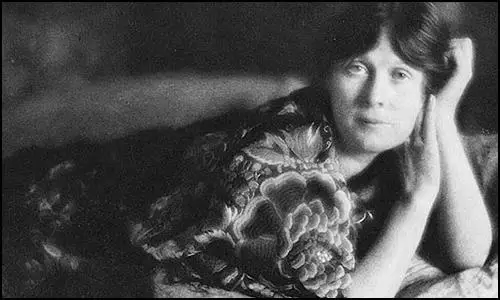
On this day in 1896 Nicholas II is crowned as the last Tsar of Imperial Russia. Nicholas, the eldest son of Alexander III, the Tsar of Russia, and Marie Feodorovna (formerly Princess Dagmar of Denmark), was born at Krasnoye Selo in May 1868. He had five younger siblings: Alexander (1869–1870), George (1871–1899), Xenia (1875–1960), Michael (1878–1918) and Olga (1882–1960).
The Romanov family had ruled Russia since 1613 when the leading nobles decided to place the sixteen-year-old Michael Romanov, a distant relative of Ivan the Terrible, on the throne. He took the title "Emperor and Autocrat of all Russia". The Emperor of Russia became known as the Tsar (Czar) and imposed autocratic rule - government by one man. All the other contenders were murdered. Unlike in other European countries, the Tsars of Russia did not take advice from an elected parliament. The country wa s run by a ten man ministerial council. Each minister was both appointed and dismissed by the Tsar.
Nicholas fell in love with Alexandra of Hesse-Darmstadt since 1889. Nicholas wrote in his diary: "It is my dream to one day marry Alix H. I have loved her for a long time, but more deeply and strongly since 1889 when she spent six weeks in Petersburg. For a long time, I have resisted my feeling that my dearest dream will come true." However, Alexander III was vehemently anti-German and had no intention of allowing the couple to marry.
Nicholas, as the eldest son, underwent training to become the next Tsar. He therefore became a target for the terrorists. In 1890 Nicholas, along with his younger brother George and their cousin Prince George of Greece set out on a world tour. He visited Egypt, India, Singapore, and Bangkok, but while traveling through the city of Otsu, Japan in April 1891, he was the victim of an assassination attempt.
Nicholas proposed to Alexandra in April 1894, but she rejected him on the grounds of her refusal to convert to the Russian Orthodox faith. However, after pressure from Kaiser Wilhelm II of Germany she changed her mind and accepted the offer. Her grandmother, Queen Victoria, also approved of the marriage and lived with her until the wedding could take place.
Despite several assassination attempts Alexander III died of liver disease on 20th October, 1894. Nicholas inherited an empire that occupied one-sixth of the land surface of the world: "Stretching from Poland in the west of the Pacific Ocean in the east, from the Arctic Circle in the north to the Black Sea in the south, it was an area of considerable diversity in climate and landscape, and in the variety of peoples who attempted to make a living within it. The vast majority of the inhabitants were peasant farmers, living in scattered village communities."
The marriage of Nicholas II and Alexandra took place in the Grand Church of the Winter Palace of St Petersburg on 26th November 1894. Alexandra was a strong believer in the autocratic power of Tsardom and she urged him to resist demands for political reform. According to Barbara W. Tuchman, the author of The Guns of August (1962): "Though it could hardly be said that the Tsar governed Russia in a working sense, he ruled as an autocrat and was in turn ruled by his strong-willed if weak-witted wife. Beautiful, hysterical, and morbidly suspicious, she hated everyone but her immediate family and a series of fanatic or lunatic charlatans who offered comfort to her desperate soul."
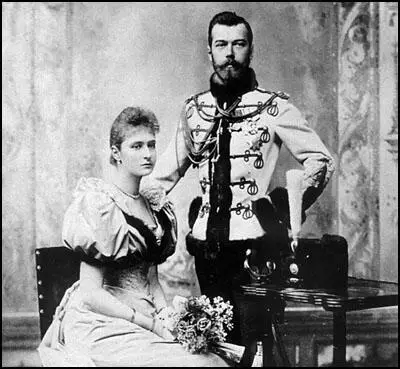
On this day in 1909 Matt Busby was born in the mining village of Orbiston, near Bellshill, Scotland, on 26th May 1909. The village included only 32 cottages.
Busby's mother, Nellie, was the daughter of Jimmy Greer, who worked down the pit in Orbiston with Matt's father, Alexander Busby. The birth of Matt was followed by three girls, Delia, Kathy and Margaret.
A Roman Catholic, Matt Busby attended St Bride's School. As he pointed out in his autobiography, Soccer at the Top: "I was as football daft as any of the boys in the village of Bellshill, and dafter than most, and we had our idols already. There were two young fellows called Alex James and Hughie Gallacher, for instance. They would be about eighteen or nineteen, I suppose, I about nine or ten." Alex James and Hughie Gallacher both went on to become leading stars in the Football League.
On the outbreak of the First World War Busby's father joined the British Army. He was posted to the Western Front and was killed at Arras in 1916. Three of Matt's uncles were also killed during the war. As Rick Glanvill pointed out in Sir Matt Busby: A Tribute: "Of the Busby menfolk, only Jimmy Greer and Matt were left when the war ended. Already an intelligent and well-behaved boy, Matt was compelled by circumstances to grow old before his time."
In 1919 Matt's mother married Harry Matthie. Matt did not get on very well with his step-father but he did developed a close relationship with his grandfather Jimmy Greer. He was a socialist and strong trade unionist who organized a boycott of the great music-hall star Harry Lauder after he attacked the miners for going on strike.
At the age of twelve, Busby's school principal recommended that he should transfer to Motherwell Higher Grade School. He added that Busby was very intelligent and had the potential to become a "first-class schoolteacher". However, Busby left school at 16 to become a miner. He later commented: "There were only two ways for boys to go in those days: down, working in the pits, or up, if you happened to be good at football."
Several members of the Busby family emigrated to the United States after they lost their husbands in the First World War. Nellie and Harry Matthie also wanted to go but Busby refused to join them as he was convinced that he would eventually make it as a professional footballer.
In 1926 Busby took part in the General Strike. Although he was eventually forced back to work these events made a deep impact on him and he remained a devout socialist for the rest of his life.
Busby joined Alpine Villa and in 1927 the club won the Under-18 Scottish Cup. He was watched by scouts from Rangers and Celtic. As his son, Sandy Busby later pointed out: "He went to Rangers for a trial. Then they found out he was a Catholic, and Celtic found out he'd had a trial with Rangers. But it was a blessing in disguise because he ended up in Manchester." Busby was signed by Manchester City in February 1928.
Busby, who was on a weekly wage of £5 a week during the season and £4 in the summer, decided to get married to his girlfriend Jean Menzies. He took time to settle and did not feature in the team that season. That summer he returned to Bellshill and later admitted that: "At home I was on top of the world but in Manchester my confidence deserted me the moment I returned to duty in July."
Busby played his first-team debut as an inside-left against Grimsby Town on 9th November 1929. He was dropped after only one game. He was recalled to the first team in March 1930 and finished up scoring three goals in 11 games that season. The team that year included Sam Cowan, Eric Brook, Fred Tilson, Jimmy McMullan and Ernie Toseland.
The following season Busby contracted pneumonia. When he returned to fitness he was played in the reserves at right-half. He was an immediate success and the following week he played in the first-team against Huddersfield Town. The following season he was virtually ever present (41 out of 42 games). At the time the team included players such as Sam Cowan, Jimmy McMullan, Eric Brook, Fred Tilson, Ernie Toseland and Jackie Bray.
Manchester City enjoyed a good FA Cup run in the 1932-33 season. Fred Tilson scored a hat-trick in City's 9-0 victory over Gateshead. Eric Brook scored both goals against Walsall (2-0) and a hat-trick against Bolton Wanderers (4-2). Tilson scored against Burnley (1-0) and Derby County (3-2) and Manchester City had reached the final at Wembley. The Everton team that day included players such as Dixie Dean, Cliff Britton, Ted Sager and Albert Geldard. With Tilson missing because of injury, City lost the game 3-0.
In the 1933-34 season Manchester City finished 5th in the First Division of the Football League. Busby scored 4 goals in 39 games that year. His form was so good that season he won his first international cap for Scotland against Wales on 4th October 1933. Wales won 3-2 and remarkably he was never selected again in peacetime. According to Paddy Crerand: "He only got one cap because there was a great deal of religious bigotry in Scotland... I'm a Catholic, I played for Celtic, and it was much more difficult to get a cap for Scotland than it was if you played for Rangers."
The club also enjoyed a good FA Cup run in the 1933-34 season beating Blackburn Rovers (3-1), Hull City (4-1), Sheffield Wednesday (2-0), Stoke City (1-0), Aston Villa (6-1) to reach the final against Portsmouth. On the way to Wembley the goals had been scored by Fred Tilson (7), Alec Herd (4), Ernie Toseland (4) and Eric Brook (3). The defence, that included players such as Busby, Frank Swift, Billy Dale, Sam Cowan and Jackie Bray, also performed well.
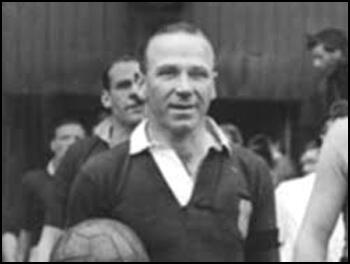
On this day in 1917 Norman Thomas writes about being a conscientious objector in The New Republic.
As conscientious objectors we turn to your journal because, more powerfully than any other, it has expressed in subtle analyses our abiding faith in humane wisdom. You have never countenanced the evil doctrine of the brute coercion of the human will. You have preached and practised the virtue of tolerance, the kind of tolerance for the lack of which the state grows mechanized and conscienceless.
You know something of the machinery of unfair play. You understand the tyranny of sham shibboleths. You appreciate the menace of military psychology. We appeal to you, strategically situated as you are, to assist the cause of the conscientious objectors. We beg you to note the following facts:
In the evolution of the human mind we discover a gradually widening hiatus between physical competence and intellectual moral competence. So deeply imbedded in our life values is this distinction that we feel rather ashamed of being too expert physically. The man of blood and iron does not appeal to our finer perceptions as a being altogether worthy of our worshipful attention. (The God whom we worship is neither a jingo nor a militarist.) But Voltaire - he of the skinny shanks and the anemic face - what exuberant pride wells up in the greatest and in the least of us at the sound of that marvelous name! And soft-spoken Jesus - what fitting tribute can the reeling world lay at the feet of him who died that goodwill and loving kindness might assuage the hearts of inimical men.
The complexity and richness of life have permitted, and increasingly so, the more or less free play of all modes of energy. There are many men best adapted by training and temperament to the performance of physical acts of heroism; there are some men more naturally suited to the performance of intellectual deeds of courage, while yet some others shine in deeds of moral bravery.
Why sanction the inhuman device of forcing all manner of men into the narrowly specific kind of devotion for which so many of them are hopelessly unfit? Tolerance arises from the existence of varying types of doers, all willing to respect one another's special competence. It is not too extreme to assert that in wartime (as in peacetime) some of the most heroic deeds are performed by those who do not (and, if called upon, would not) take up arms in defense of the cause. There are other forms of bravery than the purely military one. Let us be reasonable.
The one ineradicable fact which noamount of official intimidation can pulverize out of existence is that there is a type of man to whom (military) participation in war is tantamount to committing murder. He cannot, he will not commit murder. There is no human power on God's earth that can coerce him into committing (what he knows to be) the act of murder. You may call him sentimentalist, fool, slacker, mollycoddle, woman - anything "disreputable" you please. But there he is, a tremendous fact. Shall he be maltreated for his scruples? Or shall he be respected (as his denders are) for his conscientiousness? We cannot leave so momentous an issue to chance or to the cold machinery of administration. Men of sensitive insight must help prepare a social setting within America sufficiently hospitable to all conscientious objectors.
It is good to remind ourselves of our in- stinctive respect for conscientious objectors. When a man is called to serve on a jury empaneled in a murder case, he may be honorably excused from duty if he has conscientious objections to the death penalty. When we think sanely we are not averse to honoring the man of conscience provided he be an active friend of mankind and not a mere ease-taker. The test of manhood lies in service; not in one particular kind of service (suitable to one particular type of mind and body) but genuine service genuinely rendered to humanity.
Hence the philosophic value of tolerance. To keep alive genuine tolerance in wartime is the greatest single achievement to which rationalists can dedicate themselves. America is caught in this insidious entanglement; obsessed with the tradition - the mere outward form and symbol - of liberty of conscience, she has failed to realize the living need of a real grant and a substantial practice of our vaunted freedom of conscience. It is not the tradition we lack; only a vital belief in that tradition.
In times of precarious peace, when the social classes wage an almost relentless warfare and the daily grind of poverty and distress lays armies of the proletariat low, life for the disadvantaged groups is made more or less livable only by the thought that between them and their official superiors certain constitutional and humane guarantees of tolerance exist as safeguards of mutual understanding. There is room for difference of opinion. There is a breathing space for discussion.
How desperate must the social situation have become if large numbers of conscientious and law-abiding citizens have begun to feel an appalling sense of uneasiness in the presence of huge inscrutable forces, far beyond their power of control or sympathetic understanding. Why this amazing disquietude? The answer is simple and straightforward. There is no longer the sense - so natural and dear to free men - of being able to appeal from manifestly unfair decisions. Too many subordinate officials are being vested with a tremendous authority over impotent human beings.
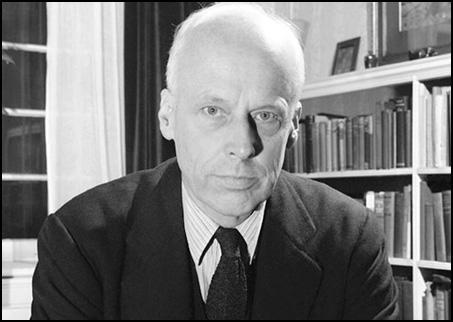
On this day in 1940 Winston Churchill orders the evacuation of troops and equipment from the port of Dunkirk. "Ever since May 20, the gathering of shipping and small craft had been proceeding under the control of Admiral Ramsay, who commanded at Dover. After the loss of Boulogne and Calais only the remains of the port of Dunkirk and the open beaches next to the Belgian Frontier were in our hands. On the evening of the 26th an Admiralty signal put Operation Dynamo into play, and the first troops were brought home that night. Early the next morning, May 27, emergency measures were taken to find additional small craft. The various boatyards, from Teddington to Brightlingsea, were searched by Admiralty officers, and yielded upwards of forty serviceable motor-boats or launches, which were assembled at Sheerness on the following day."
Operation Dynamo, that had been drawn up by General John Gort, the Commander in Chief of the British Expeditionary Force (BEF). It began on 27th May and on the first day 7,000 men were moved. The forces of fighter command were thrown in without reserve and tempered the weight of German bombing on the beaches. Destroyers and minesweepers, which brought off most of the men, were aided by every sort of vessel - trawlers, yachts, barges and pleasure boats.
Reginald V. Jones who worked for British Scientific Intelligence was one of those involved in the planning of Operation Dynamo. "Around 20th May I well remember John Perkins coming into my office and going up to the map on my wall and saying, 'This is the situation. The Germans are here and here and here and our Army is cut off and retreating to the sea at Dunkirk. The Chiefs of Staff think that we shall be lucky if we get twenty thousand out.' The position seemed hopeless...The country was fired by the epic of the small boats that had sailed, some as many as seven times, into the teeth of the Luftwaffe to bring back our Army; and among those who took their boats to Dunkirk was my cousin Reg Mytton. I heard of the Commander-in-Chief, Lord Gort, standing on the beach with two Guardsmen as loaders while he tried to shoot down German dive bombers with a rifle."
Given the situation it was not surprising that there were more than a few instances of blind panic and bad behaviour. It was reported that "groups of men, deserted by their officers, prowling the town in a mood of savage violence; of a major shot dead through the head by another because it was the only way of preventing hi9m from capsizing an already overloaded rowing boat; a senior officer refusing to leave a foxhole he had dug in the sand; a corporal of the Guards who kept order in his boat, filled with fear-crazed troops, by threatening to shoot the first one who disobeyed him."
